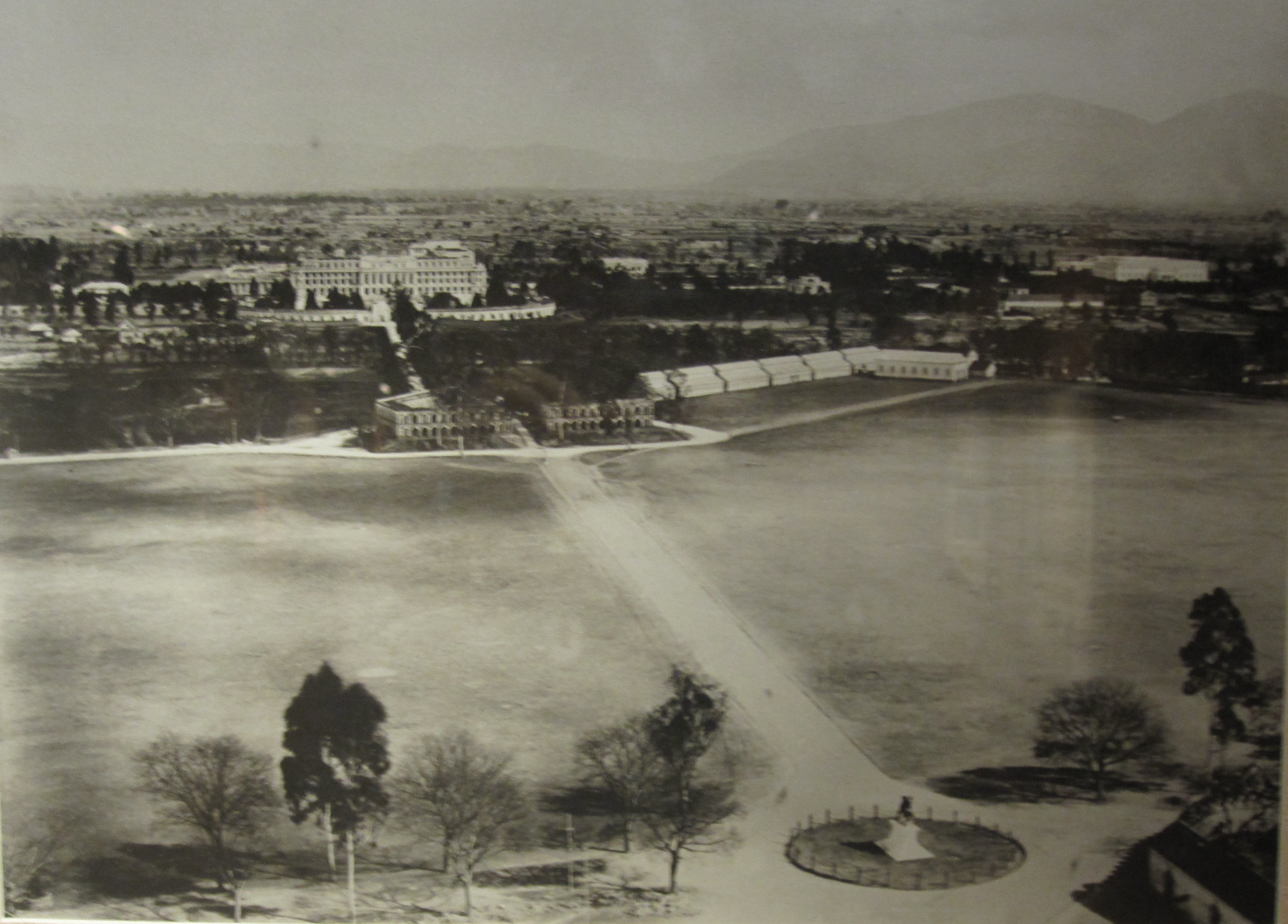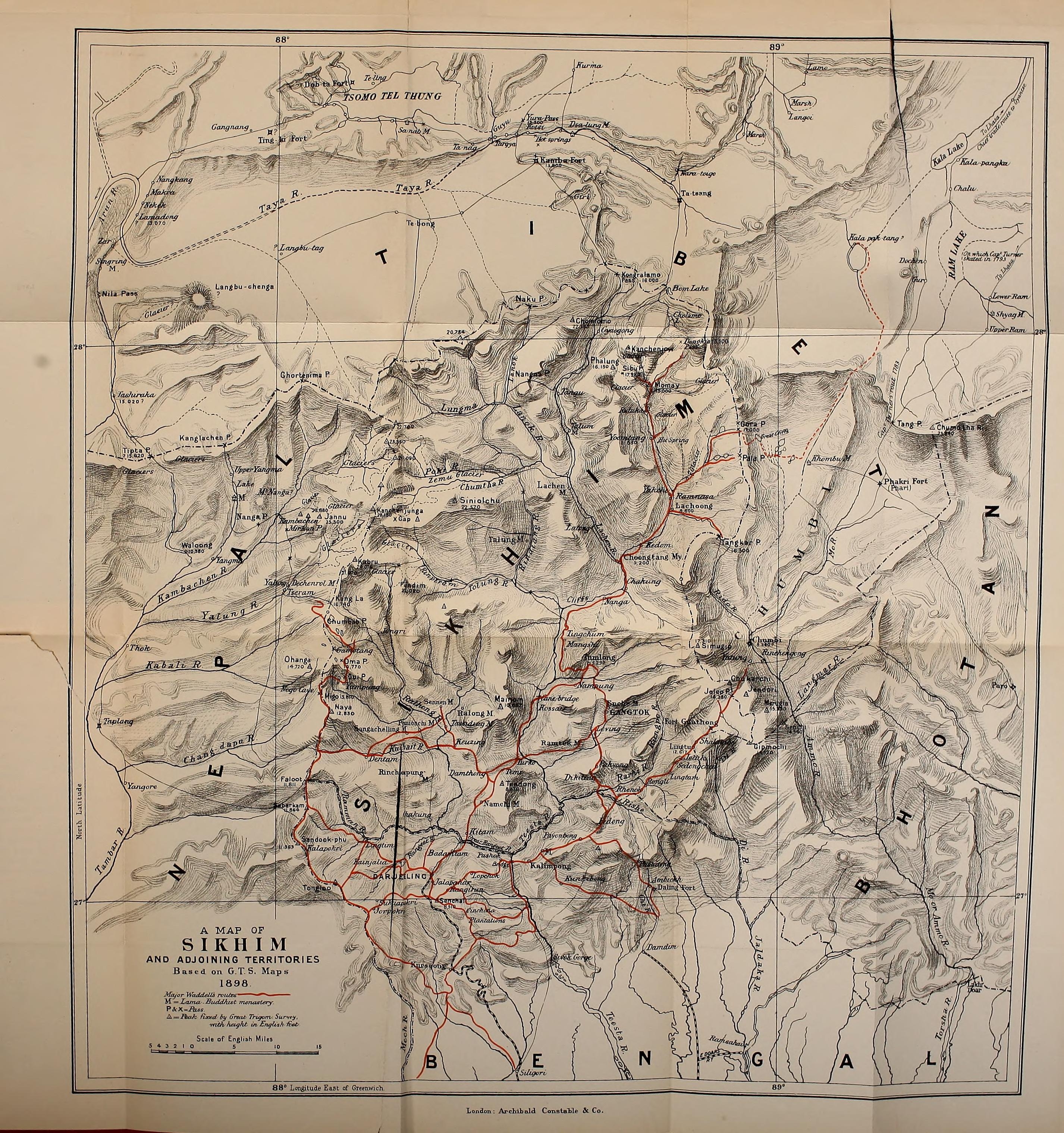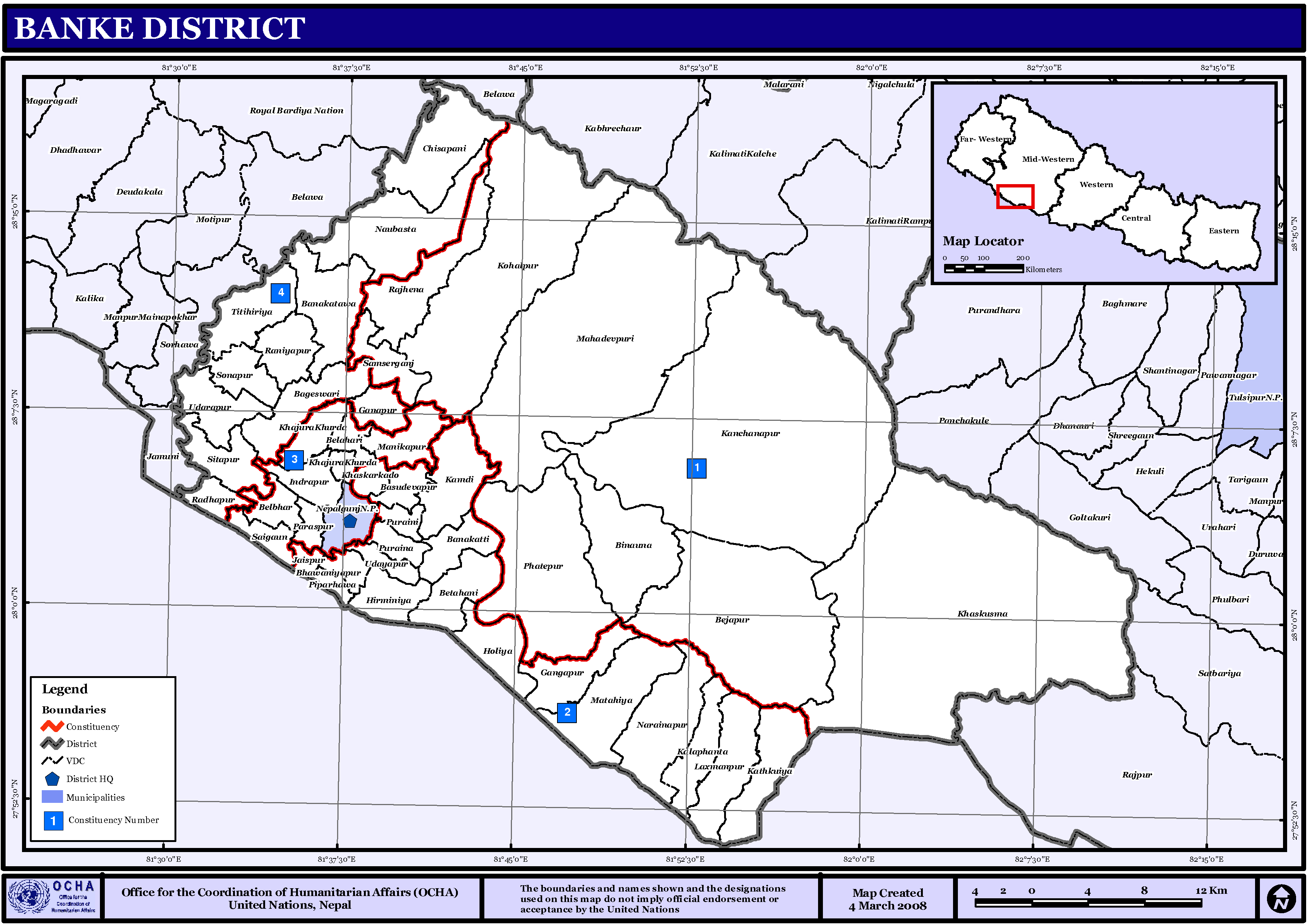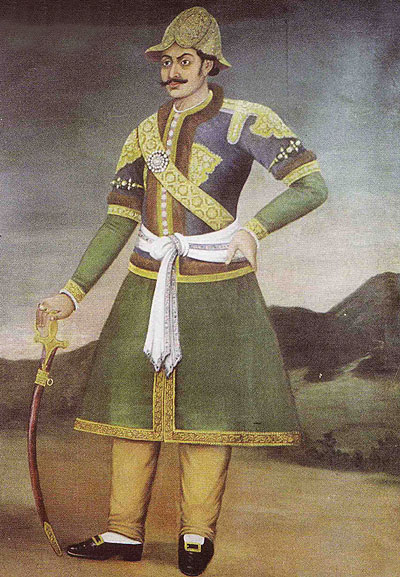|
Nepal–Britain Treaty Of 1923
The Nepal–Britain Treaty was first discussed in 1921 and the final treaty was signed on 21 December 1923 in Singha Durbar. The treaty was the first formal acknowledgement by the British that Nepal, as an independent nation, had the right to conduct its foreign policy in any way it saw fit and was considered to be “a great achievement of 25 years of Chandra Shumsher’s diplomacy.” The treaty was recorded in 1925 in the League of Nations. Background Expansion of Gorkha Kingdom (Nepal) While the territory of Nepal has been united and fragmented multiple times during the reign of various rulers throughout history, the Expansion of Kingdom, campaign of present-day Nepal was initiated by Prithivi Narayan Shah, who succeeded to the throne of Gorkha after the death of his father Nara Bhupal Shah in 1743 (1799 BS). Nepal, at the time, was divided into more than 50 small principalities. Prithivi Narayan Shah and his successors expanded the territory of the small state of Gorkha ... [...More Info...] [...Related Items...] OR: [Wikipedia] [Google] [Baidu] |
Singha Durbar
Singha Durbar ( ne, सिंहदरवार, lit=Lion's Palace) is a palace in Kathmandu, the capital of Nepal. The palace complex lies in the centre of Kathmandu, to the north of the Babar Mahal and Thapathali Durbar and east of Bhadrakali Temple. This palace was built by Chandra Shumsher JBR in June 1908. The palace used to be one of the most exquisite and lavish of palaces in the world until the 1950s. Today it houses buildings of the Nepali Government, including the Pratinidhi Sabha, the Rastriya Sabha and several ministries. History Singha Durbar was built by Chandra Shumsher JBR immediately after accession to the post of Prime Minister. It was initially a small private residence but grew bigger during the construction. Immediately after construction, Chandra Shumsher JBR sold this property to the Government of Nepal for 20 million Nepali rupees as the official residence of Prime minister. After his death in 1929, it was used as the official residence of prime m ... [...More Info...] [...Related Items...] OR: [Wikipedia] [Google] [Baidu] |
Kingdom Of Sikkim
The Kingdom of Sikkim (Classical Tibetan and sip, འབྲས་ལྗོངས།, ''Drenjong''), officially Dremoshong (Classical Tibetan and sip, འབྲས་མོ་གཤོངས།) until the 1800s, was a hereditary monarchy in the Eastern Himalayas which existed from 1642 to 16 May 1975, when it merged with the India, Republic of India. It was ruled by Chogyals of the Namgyal dynasty. History Nepalese-Bhutanese domination In the mid-18th century, Sikkim was invaded by both Nepal (then the Gorkha Kingdom) and Bhutan (then ruled by Gedun Chomphel) and was under both the Gorkha and the Bhutanese rule for more than 40 years. Between 1775 and 1815, almost 180,000 ethnic Nepalis from Eastern and Central Nepal migrated to Sikkim. After the British colonisation of India, however, Sikkim allied itself with British India as they had a common enemy – Nepal. The infuriated Nepalese attacked Sikkim with vengeance, overrunning most of the region including the Terai. ... [...More Info...] [...Related Items...] OR: [Wikipedia] [Google] [Baidu] |
Bardiya District
Bardiya District ( ne, बर्दिया जिल्ला), one of the seventy-seven Districts of Nepal, is part of Lumbini Province of Nepal. The district, with Gulariya as its headquarters, covers an area of and according to the 2001 census the population was 382,649 in 2011 it has 426,576. Geography and climate Bardiya lies in Lumbini Province in midwestern Nepal. It covers 2025 square kilometers and lies west of Banke District, south of Surkhet District of Karnali Province, east of Kailali District of Sudurpashchim province. To the south lies Uttar Pradesh, India. Most of Bardiya is in the fertile ''Terai'' plains, covered with agricultural land and forest. The northernmost part of the district extends into the ''Churiya'' or ''Siwalik Hills''. Bardiya National Park covers occupies most of the northern half of the district. This park is the largest undisturbed wilderness in Nepal's Terai. It provides forest, grassland and riverine habitat for endangered mammal, b ... [...More Info...] [...Related Items...] OR: [Wikipedia] [Google] [Baidu] |
Banke District
Banke District ( ne, बाँके जिल्ला , a part of Lumbini Province, is one of the 77 districts of Nepal. The district, located in midwestern Nepal with Nepalganj as its district headquarters, covers an area of and had a population of 385,840 in 2001 and 491,313 in 2011. There are three main cities in the Banke District: Nepalganj, Kohalpur and Khajura Bajaar. Geography and Climate Banke is bordered on the west by ''Bardiya district''. ''Rapti zone's'' ''Salyan'' and ''Dang Deukhuri Districts'' border to the north and east. To the south lies ''Uttar Pradesh'', India, a country in Asia; specifically ''Shravasti'' and ''Bahraich districts'' of ''Awadh''. East of Nepalganj the international border follows the southern edge of the ''Dudhwa Range'' of the ''Siwaliks''. Most of the district is drained by the ''Rapti'', except the district's western edge is drained by the ''Babai''. Rapti and Babai cross into Uttar Pradesh, a state in India, Nepal's neighboring c ... [...More Info...] [...Related Items...] OR: [Wikipedia] [Google] [Baidu] |
Indian Rebellion Of 1857
The Indian Rebellion of 1857 was a major uprising in India in 1857–58 against the rule of the British East India Company, which functioned as a sovereign power on behalf of the British Crown. The rebellion began on 10 May 1857 in the form of a mutiny of sepoys of the Company's army in the garrison town of Meerut, northeast of Delhi. It then erupted into other mutinies and civilian rebellions chiefly in the upper Gangetic plain and central India, though incidents of revolt also occurred farther north and east. The rebellion posed a considerable threat to British power in that region, and was contained only with the rebels' defeat in Gwalior on 20 June 1858., , and On 1 November 1858, the British granted amnesty to all rebels not involved in murder, though they did not declare the hostilities to have formally ended until 8 July 1859. Its name is contested, and it is variously described as the Sepoy Mutiny, the Indian Mutiny, the Great Rebellion, the Revolt of 1857, ... [...More Info...] [...Related Items...] OR: [Wikipedia] [Google] [Baidu] |
Jang Bahadur Rana
Maharaja Jung Bahadur Kunwar Ranaji, (born Bir Narsingh Kunwar ( ne, वीर नरसिंह कुँवर), 18 June 1817; popularly known as Jung Bahadur Rana (JBR, ne, जङ्गबहादुर राणा)) () belonging to the Kunwar family was a Khas Chhetri ruler of Nepal and founder of the Rana Regime in Nepal. Jung Bahadur took control of the government after killing an alleged usurper Gagan Singh, who was accused of plotting with the junior queen in 1846 to become prime minister by putting the queen's son on the throne. His original name was Bir Narsingh Kunwar but he was popularly known as Jang Bahadur, a name given to him by his maternal uncle Mathabar Singh Thapa. Mathabar Singh Thapa used to call Jang Bahadur ''Jangay'' for his boldness. His mother Ganesh Kumari was the daughter of Kaji Nain Singh Thapa, brother of Mukhtiyar Bhimsen Thapa of the then prominent ruling Thapa dynasty. During his lifetime, he eliminated the factional fighting at the cour ... [...More Info...] [...Related Items...] OR: [Wikipedia] [Google] [Baidu] |
Anglo-Nepalese War
The Anglo-Nepalese War (1 November 1814 – 4 March 1816), also known as the Gorkha War, was fought between the Gorkhali army of the Kingdom of Nepal (present-day Nepal) and the British forces of the East India Company (EIC, present-day India). Both sides had ambitious expansion plans for the mountainous north of the Indian subcontinent. The war ended with the signing of the Treaty of Sugauli in 1816 AD, which ceded some Nepalese controlled territory to the EIC. The British war effort was led by the East India Company and supported by a coalition of native states; the Garhwal Kingdom, the Patiala State and the Kingdom of Sikkim against the Kingdom of Gorkha. The Kingdom of Gorkha's war effort was led mostly by the two Thapa families; Thapa dynasty and Family of Amar Singh Thapa. Historical background The Shah era of Nepal began with the Gorkha king Prithvi Narayan Shah invading Kathmandu valley, which consisted of the capital of the Malla confederacy. Until that time only ... [...More Info...] [...Related Items...] OR: [Wikipedia] [Google] [Baidu] |
Ambassador
An ambassador is an official envoy, especially a high-ranking diplomat who represents a state and is usually accredited to another sovereign state or to an international organization as the resident representative of their own government or sovereign or appointed for a special and often temporary diplomatic assignment. The word is also used informally for people who are known, without national appointment, to represent certain professions, activities, and fields of endeavor, such as sales. An ambassador is the ranking government representative stationed in a foreign capital or country. The host country typically allows the ambassador control of specific territory called an embassy, whose territory, staff, and vehicles are generally afforded diplomatic immunity in the host country. Under the Vienna Convention on Diplomatic Relations, an ambassador has the highest diplomatic rank. Countries may choose to maintain diplomatic relations at a lower level by appointing a chargé d'aff ... [...More Info...] [...Related Items...] OR: [Wikipedia] [Google] [Baidu] |
Resident (title)
A resident minister, or resident for short, is a government official required to take up permanent residence in another country. A representative of his government, he officially has diplomatic functions which are often seen as a form of indirect rule. A resident usually heads an administrative area called a residency. "Resident" may also refer to resident spy, the chief of an espionage operations base. Resident ministers This full style occurred commonly as a diplomatic rank for the head of a mission ranking just below envoy, usually reflecting the relatively low status of the states of origin and/or residency, or else difficult relations. On occasion, the resident minister's role could become extremely important, as when in 1806 the Bourbon king Ferdinand IV fled his Kingdom of Naples, and Lord William Bentinck, the British Resident, authored (1812) a new and relatively liberal constitution. Residents could also be posted to nations which had significant foreign influence ... [...More Info...] [...Related Items...] OR: [Wikipedia] [Google] [Baidu] |
Foreign Policy
A State (polity), state's foreign policy or external policy (as opposed to internal or domestic policy) is its objectives and activities in relation to its interactions with other states, unions, and other political entities, whether bilaterally or through multilateralism, multilateral platforms.Foreign policy ''Encyclopedia Britannica'' (published January 30, 2020). The ''Encyclopedia Britannica'' notes that a government's foreign policy may be influenced by "domestic considerations, the policies or behaviour of other states, or plans to advance specific geopolitical designs." History The idea of long-term management of relationships followed the development of professional diplomatic corps that managed diplomacy. In the 18th century, due to extreme turbulence in History of Europe# ...[...More Info...] [...Related Items...] OR: [Wikipedia] [Google] [Baidu] |
Vassal State
A vassal state is any state that has a mutual obligation to a superior state or empire, in a status similar to that of a vassal in the feudal system in medieval Europe. Vassal states were common among the empires of the Near East, dating back to the era of the Egyptian, Hittite and Mitanni conflict, as well as ancient China. The use of vassal states continued through the Middle Ages, with the last empire to use such states being the Ottoman Empire. The relationships between vassal rulers and empires was dependent on the policies and agreements of each empire. While payment of tribute and military service is common amongst vassal states, the degree of independence and benefits given to vassal states varied. Today, more common terms are puppet state, protectorate, client state, associated state or satellite state. Historical examples Ancient Egypt The reign of Thutmose III (1479 BC-1425 BC) laid the foundations for the systems that functioned during the Amarna period of Egypt ... [...More Info...] [...Related Items...] OR: [Wikipedia] [Google] [Baidu] |
_(cropped).png)






.jpg)


